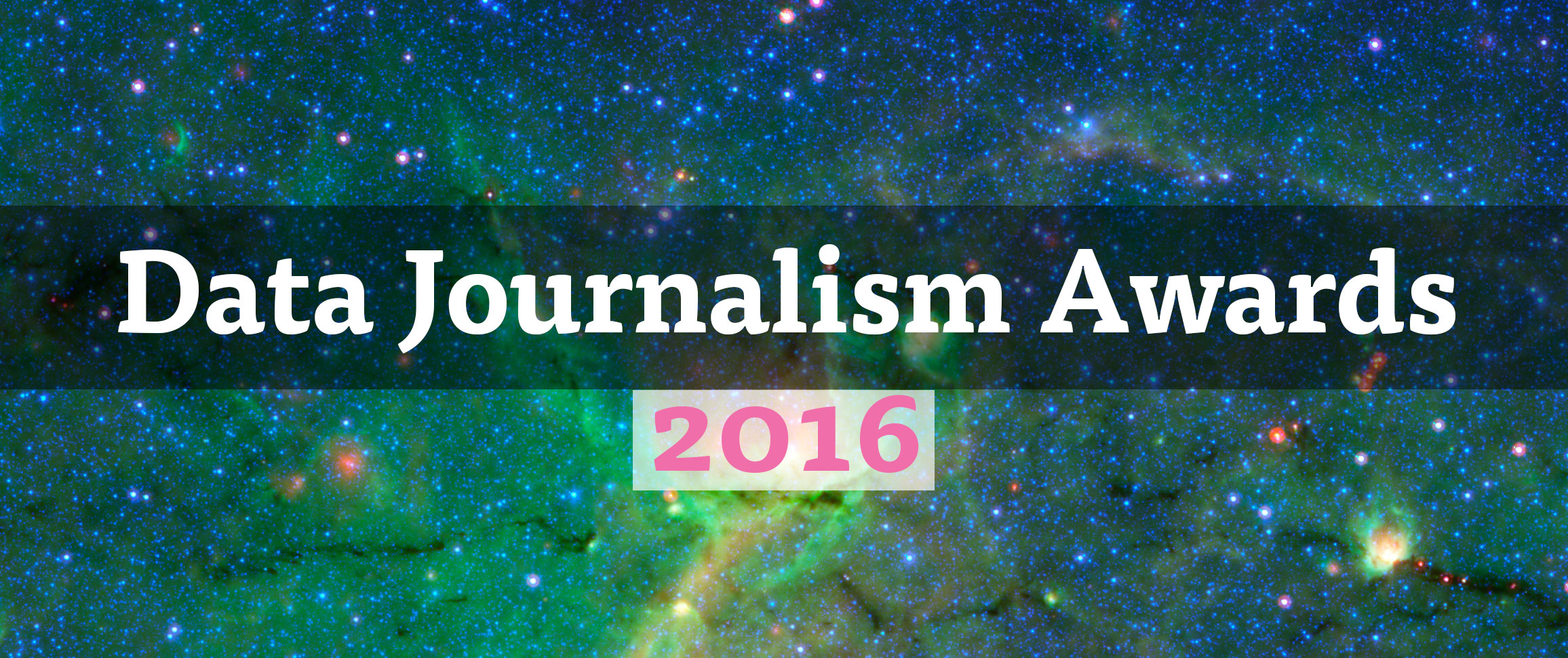
Winners of 2016 Data Journalism Awards show growing quality, promise of the field
Three years ago I wrote about “Visual Literacy in an Age of Data” in response to the growth of bold data visualization work in journalism. Our storytelling possibilities were exploding because of the number of tools and technologies – and data – at our fingertips. But we still had a lot of work ahead to meet the needs of audiences, who were trying to make sense of the world through the lens of our data journalism.
The Data Journalism Awards launched in 2012 as the first international competition recognizing excellence in the field, supported by Knight Foundation and the Google News Lab. The 2016 winners were announced at the Global Editors Network (GEN) Summit in Vienna today (with 11 winners receiving 1,000 euros each [about $1,100] and one honorable mention receiving 500 euros [about $557]). As a member of the jury for the contest, I saw the impressive quality and quantity of entries (this year the contest received 471 entries from more than 50 countries) indicating that we have come a long way in the field.
Some inspiration from this year’s DJA winners:
Data for Mobile: Mobile experiences are being prioritized with fast-loading visualizations and distinct designs made for the smaller screen, for example BuzzFeed’s winning Data Visualization of the Year (Large Newsrooms) “Spies in the Skies” about the surprising scope of the FBI’s and the U.S. Department of Homeland Security’s aerial surveillance using small, secretive aircraft.
Integrated storytelling: There were fewer boutique, standalone visualizations and much more convergence of formats to tell stories, combining text, video and data visualizations. For example, see winner of Investigation of the Year (Small Newsrooms) the Civio Foundation, with the Medicalmentalia project, which helps readers understand the issues behind access to medicine.
The scope of data journalism: The sprawling scope of data journalism became apparent. It is so many things: It could be democratizing data collection, such as with honorable mention Open Data project “IndiaSpend,” which uses a network of low-cost sensors to measure the air quality in Indian cities. It could be making the data available, or open sourcing data tools, or blending data points into a video story and much more. Data is increasingly core to all aspects journalism.
Access to data: It is important to recognize the constraints that data journalists in certain countries are up against; not all countries have the Freedom of Information Act or the First Amendment to protect them, for example, winner for Open Data La Nacion from Argentina.
Radical collaboration: Germany’s Sueddeutsche Zeitung received the largest leak in history with the Panama Papers project, which they shared with the International Consortium of Investigative Journalists, which facilitated access to 2.6 terabytes of data for a worldwide collaboration of more than 400 journalists in nearly 80 countries. Subsequent stories have exposed the global network of tax avoidance and evasion, which led to the resignation of Iceland’s prime minister, Sigmundur Gunnlaugsson.
Data for games: Learn through play with News Data App of the Year (Large Newsroom) winner FiveThirtyEight’s “What Would it Take to Swing the Election?” and experience how even small voting shifts can sway the elections.
The Data Journalism Awards inspire people to explore and experiment with data journalism and also captures the evolving nature of the field, including new tools, designs and techniques. This year’s entries remind us how important the work is, and also how much work there still is to do.
Stay in touch by signing up for the DJA newsletter.
Shazna Nessa is director of journalism at Knight Foundation. Email her via[email protected] and follow her on Twitter @shazna.
Recent Content
-
Journalismarticle ·
-
Journalismarticle ·
-
Journalismarticle ·


